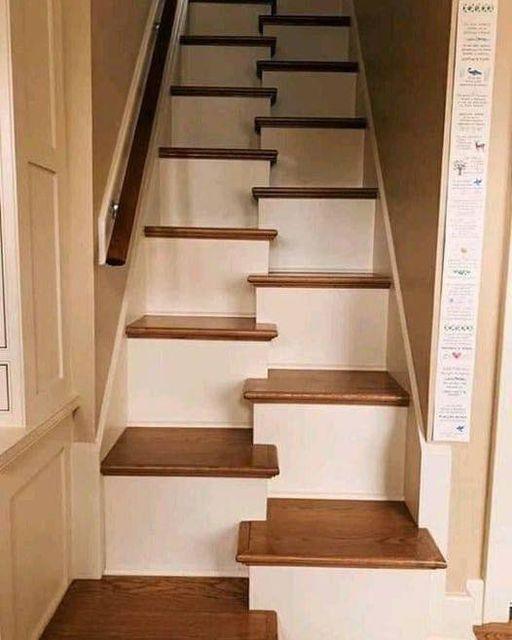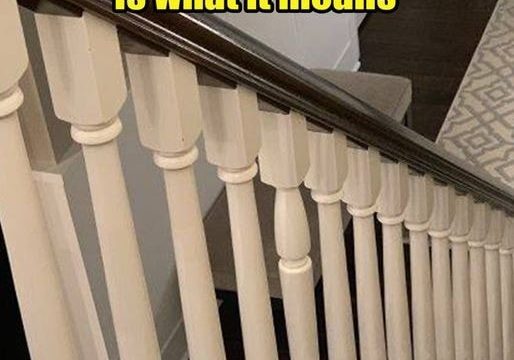The concept of “witches’ stairs” gained significant attention on TikTok in March a few years ago, sparking curiosity about their odd design and mysterious history. Despite the ominous name, these stairs are not built on superstitions but rather offer a practical solution for tight spaces. While they have an unusual reputation, their origins are more about functionality than folklore. Properly designed and installed, witches’ stairs can be both useful and aesthetically interesting.

What Are Witches’ Stairs?
The term “witches’ stairs” may sound spooky, but it refers to an innovative and space-saving staircase design rather than a haunted architectural feature. Also called “alternate tread stairs,” these staircases are particularly useful in compact areas like attics, lofts, and tiny homes, where saving space is a priority. Their purpose is purely practical: to allow for movement between floors while occupying minimal space.
How Do Witches’ Stairs Work?
Witches’ stairs are designed with alternating treads, meaning each step is half as wide as a regular step and staggered. This alternating tread design helps create a narrower staircase that requires less horizontal space than a traditional staircase. In addition to saving space, this design can also be integrated with storage, providing room for books, decor, or small items underneath.
Scott Schuttner, author of Basic Stairbuilding, explains that the design of alternate tread stairs is intended to maximize free tread area, making them potentially safer than some other compact stair solutions. While these staircases look unusual, they comply with U.S. building codes, ensuring they are safe for residential use. Standard residential stairs are generally about 3 feet wide, while witches’ stairs typically measure around 27 to 30 inches in width.
@xokelliscott walking up & down the stairs lol #spacesaverstairs #witchstairs ♬ original sound – kelli♡
Real Origins of Witches’ Stairs
The modern version of witches’ stairs can be traced back to a patent filed in 1985 by entrepreneur J.M. Lapeyre. He developed a metal version of alternate tread stairs for commercial and industrial use, seeing them as a safer alternative to ladders in cramped spaces like warehouses and ships. These stairs, often referred to as “ship stairs” or “ship ladders,” have become a practical choice in industries where space is limited, such as on oil rigs or commercial vessels.
Although the design’s recent history is clear, alternate tread stairs have been used in various forms for centuries. One early design was documented in Monckton’s One Plane Method Of Hand Railing and Stair Building, published in 1888. While they might be considered a modern solution for tight spaces, their basic concept has been around for quite some time.
Myths and Misconceptions
When witches’ stairs first became popular on TikTok in 2021, they were often linked to an urban legend. According to the myth, these staircases were supposedly built during the 17th-century Salem witch trials in Massachusetts as a means to ward off witches, who were believed to be unable to climb them. However, this theory has been widely debunked, with no historical evidence supporting such claims.
Some legends even attribute the design to Thomas Jefferson, labeling them as “Jefferson stairs” or “Jeffersonian stairs,” though there is no verifiable link between the Founding Father and these quirky staircases.
Debunking the Superstitions
Despite the myths surrounding witches’ stairs, historians and scholars agree that there is no historical basis for the idea that these stairs were built to repel witches. Robin Briggs, a historian of witchcraft, notes that there is no mention of “stairs that could disable witches” in historical records or literature. While some homes with these stairs may have also had superstitious objects like “witch bottles” buried beneath thresholds or dead cats incorporated into the building fabric, these measures were unrelated to the stair design.
Briggs further explains that one old belief claimed that a broom placed over a door lintel could trap a witch inside a room, but witches’ stairs do not appear to have any such folklore attached to them.
Functional and Decorative Appeal
While witches’ stairs might have spooky legends attached to them, their real appeal lies in their practicality and quirky charm. They are a functional alternative to full-sized staircases, especially in modern homes where space is at a premium. The alternating tread design not only saves space but also adds a unique aesthetic element to a home’s interior.
Conclusion
Witches’ stairs offer an intriguing blend of functionality and folklore. Although their spooky name and associated myths make for fun conversation, their true purpose is purely practical. Whether used in residential settings or commercial spaces, these space-saving stairs provide a creative solution to a common problem. So, while witches may not be warded off by these stairs, they certainly represent a clever design choice for compact living areas. Whether you’re fascinated by the myths or just need a practical solution, witches’ stairs make a distinct addition to any home.





